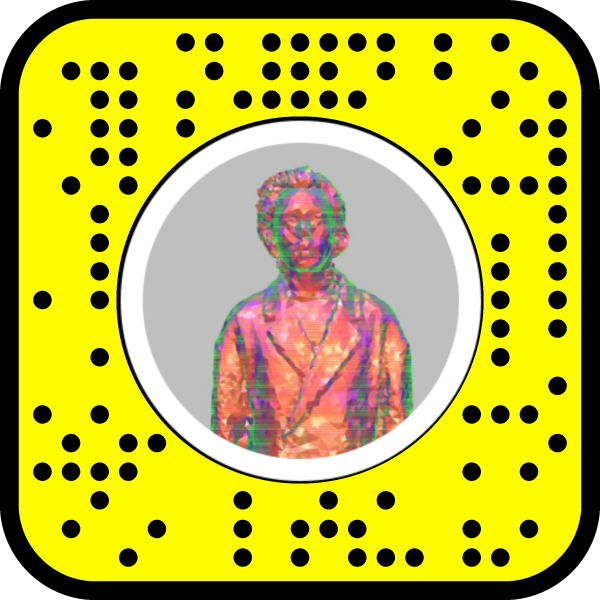how to view the installation?
GhostsOfThePast is currently visible through the Snapchat app only. Please ensure that you have downloaded the latest version of the app on your mobile device.
Note: This Installation uses location data and will only work when you are physically present at the bridge on the 1st floor of Tate Modern, London.
/ instructions /
From your mobile device click on the button above
/ alternative method /

1. Open the Snapchat App on your mobile device
2. Scan the Snapcode above
3. It will launch the AR experience which will give you further instructions on where to go and where to point your camera
‘GhostsOfThePast' is a ghost art installation by Shahwali Shayan (Shahnanigans) and is a part of his final graduation project at the Royal College of Art. It uses augmented reality technology to anchor a digital collage made up of 3D scans of handmade embroidery, paper sculptures, ready-made objects of affection and digital design elements inside the Tate Modern. Visitors can use their smartphones or tablets to access the augmented reality installation and explore the work as they walk around in the building.
The installation centres on Shahwali's own identity and self-exploration based on his autoethnographic research - drawing on themes of Dada, memory vs. counter-memory, fragmentation, ready-made art, and subversion. He wanted to challenge and question traditional notions of art and identity as well as structures that exist in our society. Through his use of augmented reality, Shahwali invites visitors to engage with his work innovatively, encouraging them to consider their own relationship to the art world and their place within it.
At the same time, the installation is deeply rooted in Shahwali's own personal experiences and heritage as a Pakistani artist. It takes into account his South Asian identity, longing, nostalgia, childhood and migration to explore the cultural and personal experiences that shape his work. His installation visually explores the idea of fragmentation of one’s identity through his use of digital media and autoethnographic research. Shahwali encourages viewers to think about the ways in which the decolonisation of art can open up new possibilities for self-expression and representation.
'GhostsOfThePast' further invites viewers to question how art and identity intersect in the digital age.
what is a Ghost exhibition?
A ghost exhibition is an art exhibition that is created using augmented reality (AR) technology. In a ghost exhibition, the artwork is not physically present in the exhibition space, but rather is created and displayed using AR technology. This allows viewers to experience the art in a virtual space, and to interact with it in a more immersive and dynamic way.
subversionism
Subversionism is a movement that seeks to challenge and subvert traditional power structures, dominant ideas and societal constructs. It is a movement that encourages new forms of expression while embracing the power of the internet, artificial intelligence, augmented reality, machine learning, and extended reality to create change and disruption.
At the heart of Subversionism is the belief that the status quo is not static, but rather a constantly shifting set of power dynamics and dominant ideologies. We seek to challenge and disrupt these power structures through the use of unconventional and disruptive tactics. We reject the idea that art should be confined to traditional forms and instead embrace the power of technology and innovation to create new forms of expression.
We are against the idea of imposing our ideas and beliefs on others, and instead, encourage the free exchange of ideas and the exploration of different perspectives. We believe that the love of novelty is a cross of sympathy that demonstrates a naive je m'enfoutisme and that the need for novelty is itself obsolete. Instead, we embrace the power of continuous contradiction and affirmation and reject the idea of common sense.
In documenting art on the basis of supreme simplicity or extreme complexity, we reject the idea of beauty as a static concept and instead embrace the power of art to challenge and disrupt. We believe that a work of art is never beautiful by decree, but rather is subjective and unique to each individual. As such, we reject the idea of criticism as a means of imposing objective standards and instead embrace the subjectivity of artistic expression.

